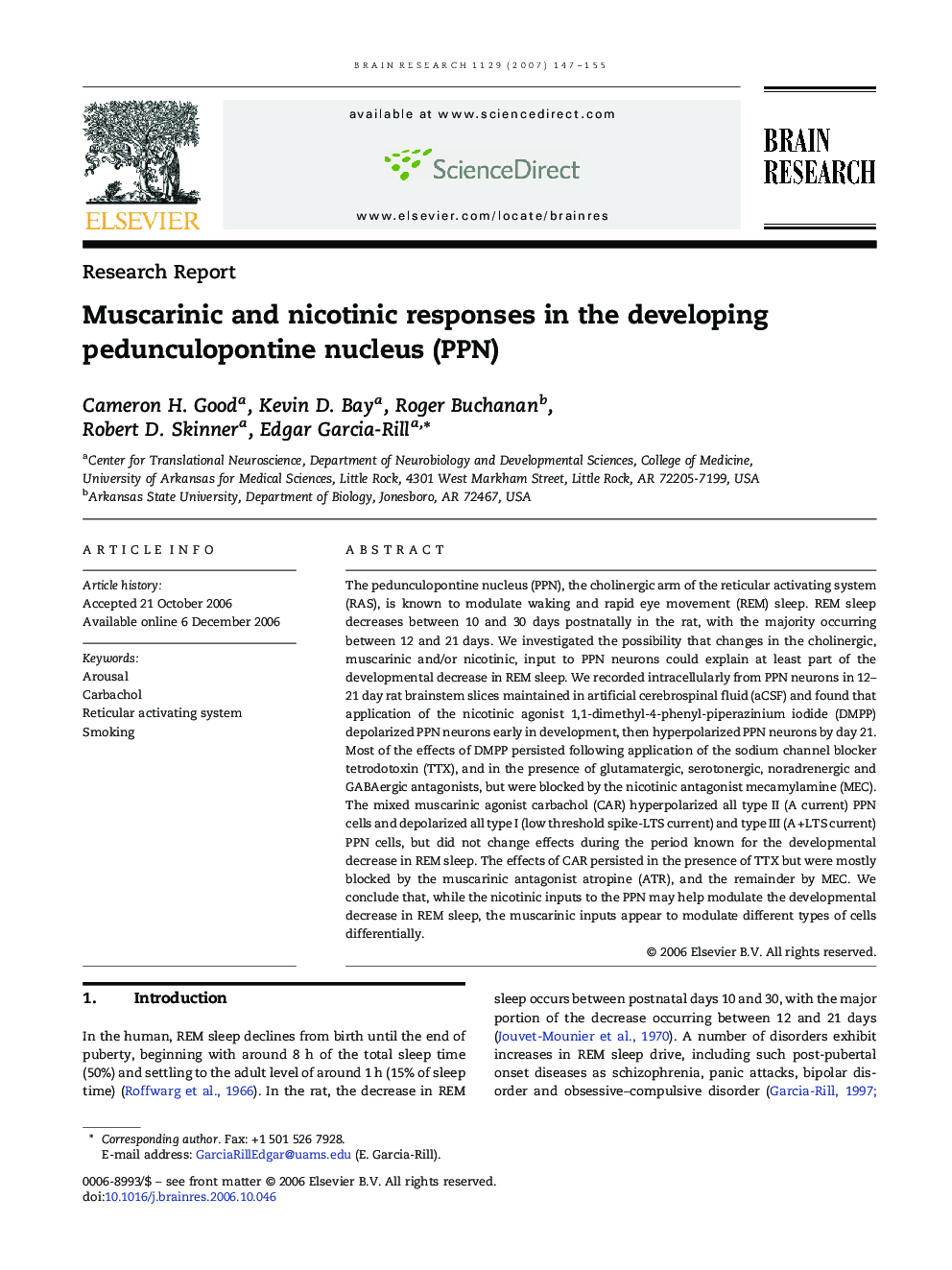| کد مقاله | کد نشریه | سال انتشار | مقاله انگلیسی | نسخه تمام متن |
|---|---|---|---|---|
| 4331768 | 1614310 | 2007 | 9 صفحه PDF | دانلود رایگان |

The pedunculopontine nucleus (PPN), the cholinergic arm of the reticular activating system (RAS), is known to modulate waking and rapid eye movement (REM) sleep. REM sleep decreases between 10 and 30 days postnatally in the rat, with the majority occurring between 12 and 21 days. We investigated the possibility that changes in the cholinergic, muscarinic and/or nicotinic, input to PPN neurons could explain at least part of the developmental decrease in REM sleep. We recorded intracellularly from PPN neurons in 12–21 day rat brainstem slices maintained in artificial cerebrospinal fluid (aCSF) and found that application of the nicotinic agonist 1,1-dimethyl-4-phenyl-piperazinium iodide (DMPP) depolarized PPN neurons early in development, then hyperpolarized PPN neurons by day 21. Most of the effects of DMPP persisted following application of the sodium channel blocker tetrodotoxin (TTX), and in the presence of glutamatergic, serotonergic, noradrenergic and GABAergic antagonists, but were blocked by the nicotinic antagonist mecamylamine (MEC). The mixed muscarinic agonist carbachol (CAR) hyperpolarized all type II (A current) PPN cells and depolarized all type I (low threshold spike-LTS current) and type III (A + LTS current) PPN cells, but did not change effects during the period known for the developmental decrease in REM sleep. The effects of CAR persisted in the presence of TTX but were mostly blocked by the muscarinic antagonist atropine (ATR), and the remainder by MEC. We conclude that, while the nicotinic inputs to the PPN may help modulate the developmental decrease in REM sleep, the muscarinic inputs appear to modulate different types of cells differentially.
Journal: Brain Research - Volume 1129, 19 January 2007, Pages 147–155